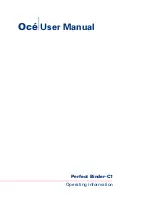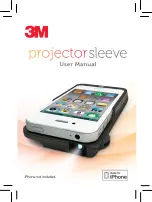
Fold Her
e
4. Install the Camera
CAUTION: Camera and PCB Wiring
While installing the camera, do not impact the printed
circuit board or wiring inside the camera with screws or
screwdriver bits. Damage to the camera can occur.
Use the three #10×3/4” mounting screws supplied with the
camera to attach the camera to a wall or ceiling.
See Figure 3.
The mounting gaskets on the camera base seal the screw
and cable holes when mounted on a flat surface.
TIP: Allow Camera Ventilation
The camera is designed to vent for proper operation.
Do NOT apply silicone or other sealants around the
base of the camera.
1. Rotation
: depending on how the camera is mounted,
rotate the camera lens so the video appears upright on
the video monitor.
2. Pan
: grip the camera pan adjustment U-Bracket sides
and twist it to find the required view.
3. Tilt
: loosen the tilt adjustment screws on the U-Bracket
until the camera tilts. Tighten the tilt screws after
adjustments are complete. Do not adjust tilt after
tightening screws.
TIP: Do Not Adjust Other Screws
The HD3S camera is factory adjusted for lens
position. Sliding back the gimbal may result in the
camera seeing parts of the housing.
TIP: Check Video Output from DVR
After replacing camera housing, ensure the
desired field of view is achieved. Adjust if camera
housing obstructs the view.
7. Configuration Settings
5. View Camera Output
1. Power on the DVR and camera.
2. Connect the supplied local video out adapter cable’s 3.5mm audio plug to the camera’s Local Video Out socket. See
figure 2.
3. Connect the local video out cable’s RCA end to a video monitor to see the camera’s line of view while adjusting the
camera’s rotation, pan, and tilt positions.
1. In the camera, press the menu button to display the
configuration menu on the monitor.
2. Toggle the button up or down to select from BACKLIGHT
or EXT LED options, or to SAVE and EXIT.
3. With an option selected, toggle the button left or right to
select sub menu options.
4. Toggle up or down to exit the option and select SAVE and
EXIT.
BLC (Back Light Compensation)
WDR (Wide Dynamic Range)
OFF: (default) shutter speed is based on the light level of the entire image.
BLC: helps improve image quality when back lighting is strong.
WDR: helps reduce glare for scenes with simultaneous wide variance in lighting.
External LED
OFF: IR is disabled. Use in product configurations where IR is not required.
AUTO: (default) IR LEDs illuminate automatically upon HD3S sensing a low light
condition.
8. Replace Camera Housing
CAUTION: Do Not Pinch Safety Wire
Ensure closing the cover does not pinch the wire
connecting the cover to the base. This can allow
moisture to enter and damage the unit.
1: Top lid assembly
2: Captive housing screws
3: IR LED/ground wires and lanyard
4: Menu button
5: Camera gimbal
6: Local video out
7: Base
8: Camera sealing gasket
Figure 3
Figure 4
Figure 5
Menu
button
1
2
3
4
5
6
Figure 2
7
8
Pan
Tilt
Rotate
6. Aim the Camera
To get the required video image, adjust the camera‘s rotation,
pan, and tilt settings using the adjustment controls shown in
Figure 4 and described in the following steps:
1. Close the housing back over onto the base.
2. Use the security key to tighten the four captive locking
screws. See 3, 7, and 8 in figure 2.
*
Camera configuration settings are also accessible from your recorder via CoC (Control over Coax) on-screen dis
-
play menus. For more information, consult your recorder documentation.




















